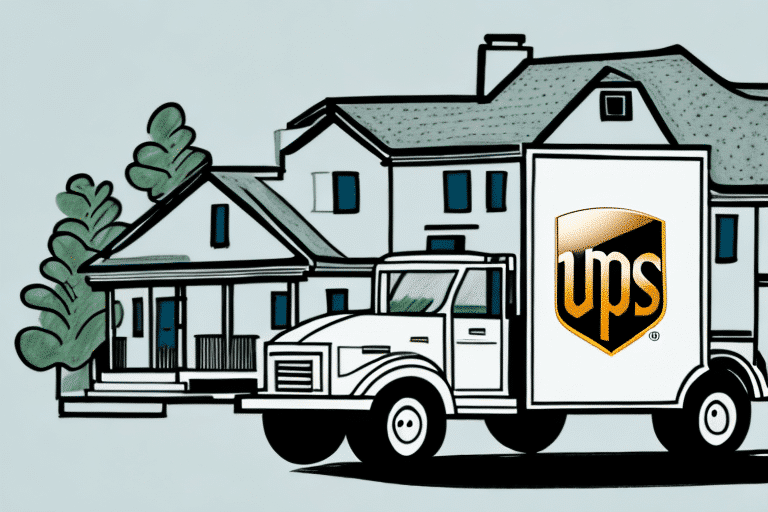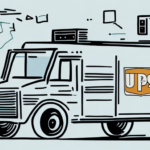Understanding the UPS Residential Delivery Surcharge
As e-commerce continues to surge, home deliveries have become increasingly common. While this trend offers convenience to customers, it poses operational challenges for shipping companies like UPS. To address the additional costs associated with residential deliveries, UPS implements a residential delivery surcharge. This article delves into the intricacies of the UPS residential delivery surcharge, exploring its implications for various stakeholders and providing strategies to mitigate its impact.
What is the UPS Residential Delivery Surcharge?
The UPS residential delivery surcharge is an extra fee applied to shipments destined for residential addresses, distinguishing them from commercial deliveries. This surcharge accounts for the higher operational costs associated with residential deliveries, such as longer delivery routes, fewer packages per stop, and increased insurance requirements. Unlike regular shipping fees, this surcharge can notably elevate the total cost of shipping.
It's important to recognize that not all shipping carriers implement a residential delivery surcharge. Some may incorporate these costs into their standard shipping fees, while others apply surcharges selectively based on shipment type or geographic region. Always consult your shipping carrier to understand their specific policies regarding residential deliveries.
Reasons Behind the UPS Residential Delivery Surcharge
Increased Operational Costs
Delivering to residential areas often demands more resources. Drivers may face longer routes, navigate through narrow streets, dead-ends, or gated communities, and handle packages individually without the efficiency of bulk deliveries typical in commercial areas. These factors contribute to higher labor and fuel costs, necessitating the surcharge.
Lower Package Volumes
Residential deliveries typically involve fewer packages per stop compared to commercial deliveries. This reduced volume means higher costs per package, as the fixed costs of delivery are distributed across fewer items.
Enhanced Security and Handling
Delivering to homes may require additional security measures and careful handling to ensure packages are left safely, especially in locations where direct delivery isn't always possible.
Cost of the UPS Residential Delivery Surcharge
As of 2023, the UPS residential delivery surcharge ranges from $1.00 to $4.00 per package, depending on service type, weight, and package dimensions. It's crucial to check the UPS official website for the most current surcharge information, as rates are subject to change.
In addition to the surcharge, certain areas classified as remote or difficult to access, such as rural regions, may incur higher fees. Customers aiming to manage these costs should consider using the UPS rate calculator to estimate total shipping expenses accurately.
Impact on E-commerce and Businesses
The residential delivery surcharge significantly affects e-commerce businesses by increasing shipping costs, which can erode profit margins and influence product pricing. Small businesses, in particular, may find it challenging to absorb these additional expenses.
- Profit Margins: Higher shipping costs can reduce overall profitability, especially for low-margin products.
- Customer Pricing: Businesses may pass on the surcharge costs to customers, potentially affecting sales.
- Shipping Policies: Companies might need to revise their shipping policies to address these additional costs.
To mitigate these challenges, businesses can explore strategies such as negotiating bulk shipping rates with UPS or utilizing third-party logistics providers that offer competitive shipping solutions.
Strategies to Avoid or Reduce the UPS Residential Delivery Surcharge
Use UPS Access Point Locations
By directing shipments to UPS Access Point locations—such as local businesses, convenience stores, or UPS stores—customers can bypass the residential surcharge entirely. This not only reduces shipping costs but also offers flexibility in package pickup times.
Consolidate Shipments
Combining multiple packages into a single shipment can decrease the overall surcharge per package. This approach is especially beneficial for businesses shipping multiple items to the same destination.
Select Alternative Delivery Services
Choosing different delivery times or slower shipping options may result in lower surcharges. For instance, scheduling deliveries during off-peak hours can be more cost-effective.
Explore Discounts and Negotiations
Businesses can negotiate shipping rates with UPS, especially if they handle high volumes of shipments. Additionally, utilizing shipping aggregators or third-party platforms may provide access to discounted rates.
Alternative Shipping Carriers
For those seeking alternatives to UPS with potentially lower or no residential delivery surcharges, consider the following options:
- FedEx: Offers a range of residential delivery services, sometimes with different surcharge structures. It's advisable to compare rates based on specific shipping needs.
- USPS: The United States Postal Service does not typically impose a residential delivery surcharge, making it a cost-effective alternative for certain shipments.
- DHL: Provides international shipping options with varying surcharge policies. Suitable for businesses with global shipping requirements.
Always assess each carrier's pricing, delivery times, and service quality to determine the best fit for your shipping requirements.
Comparing UPS with FedEx: Residential Delivery Surcharges
Both UPS and FedEx impose residential delivery surcharges, but their structures differ:
- UPS: Generally charges between $1.00 to $4.00 per package, depending on various factors.
- FedEx: Often has a lower surcharge range compared to UPS, but this can vary based on service type and destination.
For detailed comparisons, businesses should review the FedEx residential surcharge policy and the corresponding UPS information to make informed decisions.
Future Trends and Policy Changes
The shipping industry is continually evolving, influenced by factors such as technological advancements, economic shifts, and global events like the COVID-19 pandemic. Potential future trends impacting the UPS residential delivery surcharge include:
- Increased Automation: Enhanced logistics and automation could streamline residential deliveries, potentially reducing surcharges.
- Sustainability Initiatives: Efforts to minimize environmental impact may influence delivery strategies and associated costs.
- Economic Conditions: Inflation and fuel price fluctuations can affect operational costs, leading to adjustments in surcharge rates.
Businesses and customers should stay informed about these trends by regularly consulting UPS's official channels and industry reports.
Conclusion
The UPS residential delivery surcharge is a significant factor affecting both individual customers and businesses involved in shipping. By understanding the reasons behind the surcharge, its impact, and the strategies available to mitigate its effects, stakeholders can make more informed decisions to manage shipping costs effectively. Exploring alternative carriers and staying updated on industry trends further empowers businesses to maintain profitability in a competitive e-commerce landscape.






















